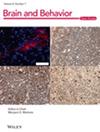Alzheimer's disease (AD) and white-matter structural connectivity have been linked in some observational studies, although it is unknown if this is a causal relationship. The purpose of this study was to examine the impact of various white-matter structural connectivity on AD via a two-sample multivariate Mendelian randomization (MR) approach.
The genome-wide association study (GWAS) of Wainberg et al. provided the summary data on white-matter structural connectivity, and Bellenguez et al.’s study provided the GWAS aggregated data for AD. MR methods included inverse variance weighted, Mendelian randomization Egger, simple mode, weighted median, and weighted mode. Heterogeneity, horizontal pleiotropy, and “leave-one-out” analysis guaranteed the robustness of causation. Finally, reverse MR analysis was conducted on the white-matter structural connectivity that showed positive results in the forward MR analysis.
Among 206 white-matter structural connections, we identified 10 connections were strongly correlated with genetic susceptibility to AD. Right-hemisphere limbic network to thalamus white-matter structural connectivity and Right-hemisphere salience_ventral attention network to accumbens white-matter structural connectivity were positively correlated with the likelihood of AD, while the remaining 8 white-matter structural connections were negatively related with AD. None of the above 10 white-matter structural connections have a reverse causal relationship with AD.
Our MR study reveals a certain degree of association between white-matter structural connectivity and AD, which may provide support for future diagnosis and treatment of AD.



